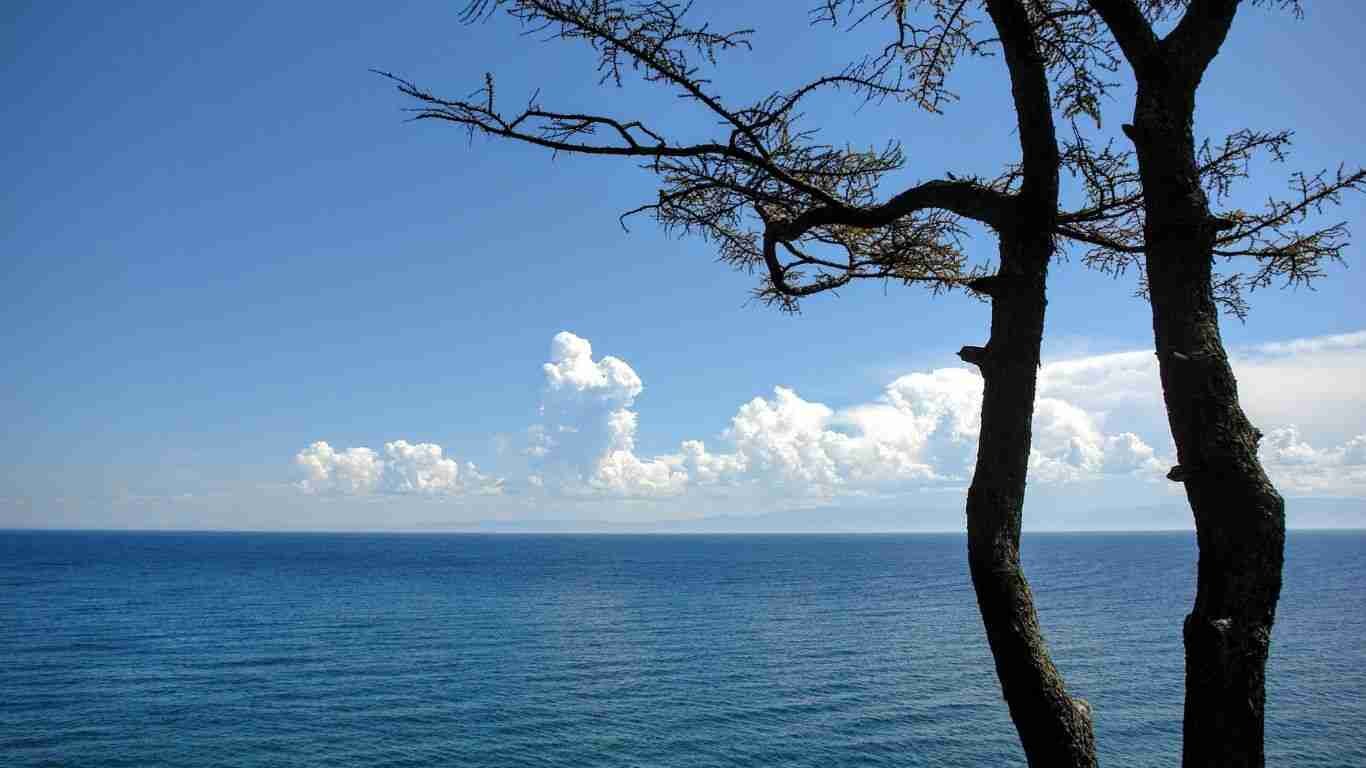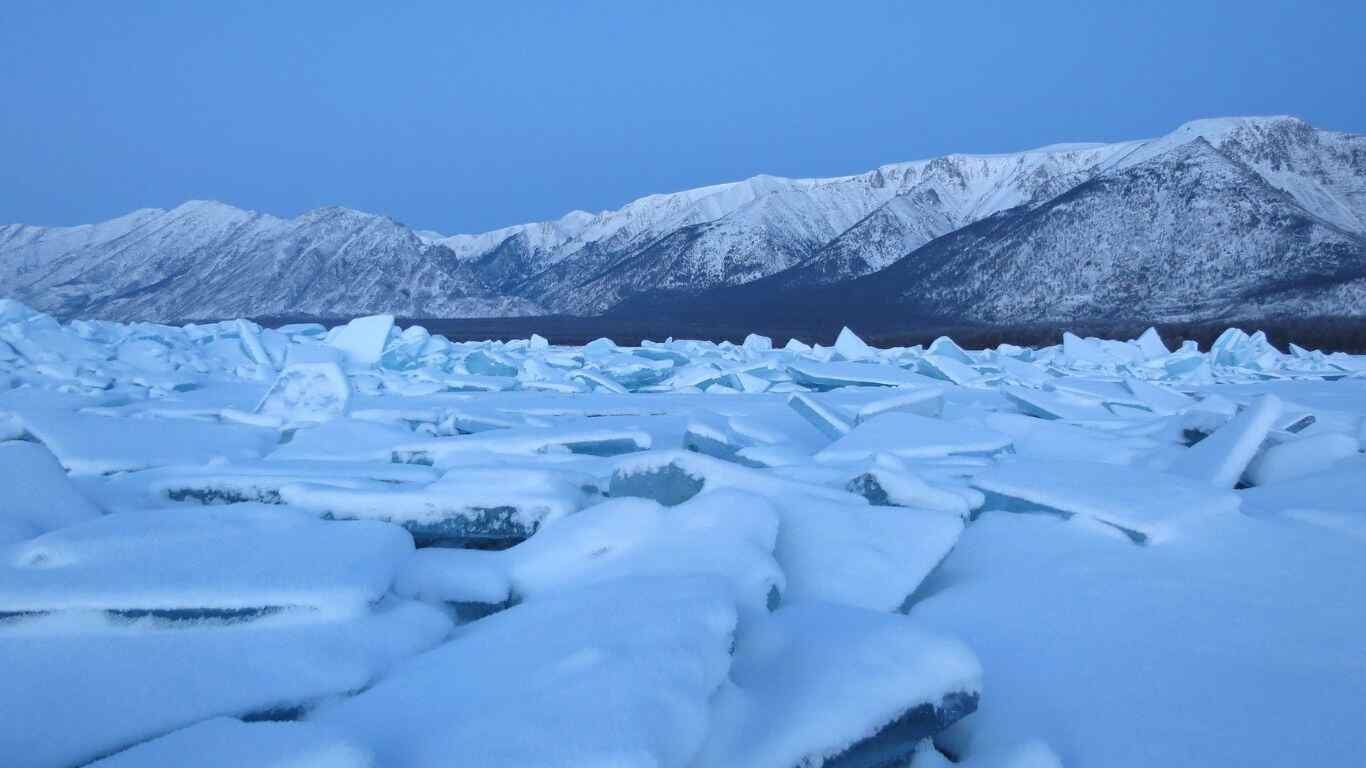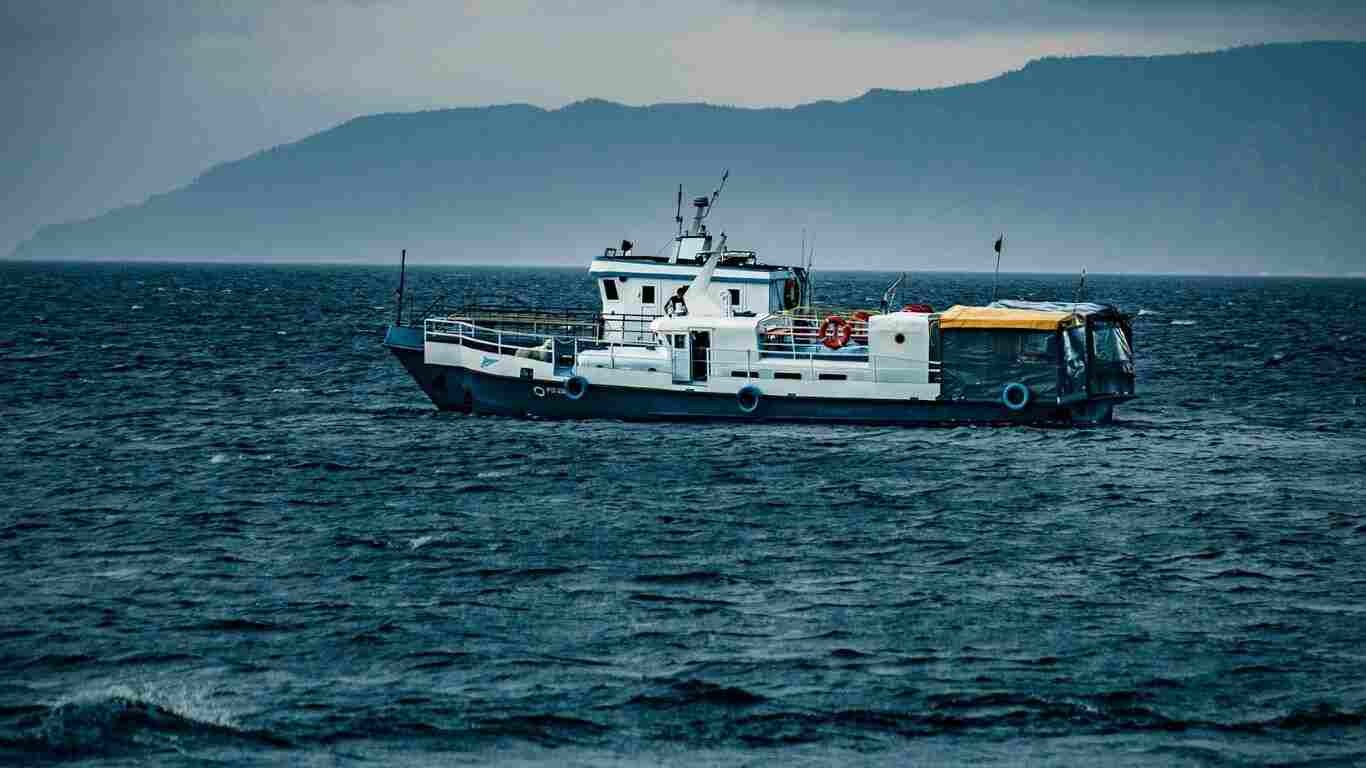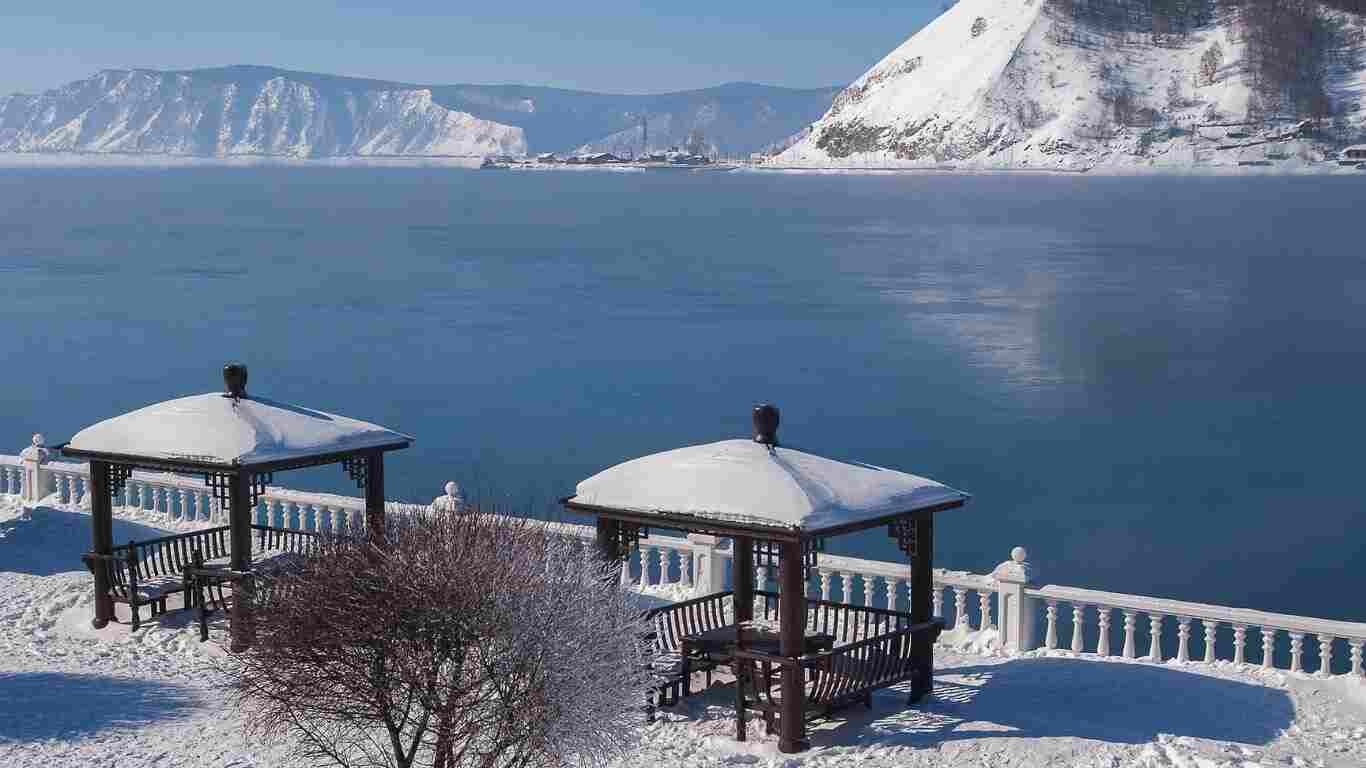
Table of Contents
ToggleIntroduction
The depth of Lake Baikal, which is located in the center of Siberia, has attracted both scientists and nature lovers. The depth of Lake Baikal, which is the oldest and deepest freshwater lake in the world, is more than simply a number; it represents a distinct geological past and a varied ecosystem. Lake Baikal depth reaches a maximum of around 1,642 meters and measures approximately 636 kilometers long and 80 kilometers wide. Its designation as one of the planet’s most fascinating natural wonders is mostly due to its enormous depth.
Understanding Lake Baikal depth is necessary for understanding its importance in environmental and scientific contexts. We’ll learn how this remarkable feature effects the lake’s environment, affects the global climate, and adds to the lake’s rich tapestry of myths and tales as we explore the numerous facets of Lake Baikal depth.
A Glimpse Into Lake Baikal’s Formation
A story recorded in the annals of geological time is the development of Lake Baikal. The lake started to take shape as a rift valley, a feature produced by the diverging movement of tectonic plates, about 25 to 30 million years ago. The lake’s unusual depth is caused by the Baikal Rift Zone, a tectonic border that separates the North American and Eurasian plates. The long, deep ditch that resulted from the plates pulling apart was later filled with water.
This tectonic activity directly contributes to Lake Baikal depth. Because of continuous tectonic processes, the rift valley has deepened over millions of years. Because of this, Lake Baikal has been able to accumulate old sediments and geological formations, some of which may be traced back to the very beginning of Earth’s existence. The lake’s enormous volume, which is estimated to be 23,600 cubic kilometers, or 20% of the world’s unfrozen freshwater, is mostly due to its great depth.
What Makes Lake Baikal Depth So Surprising?
An Unprecedented Depth in Freshwater Lakes
It’s important to evaluate Lake Baikal depth in relation to other significant lakes worldwide. Although there are numerous enormous lakes with outstanding depths, none compare to Lake Baikal depth. For example, the maximum depth of the Caspian Sea, which is sometimes referred to be the largest lake by surface area, is approximately 1,025 meters, which is much shallower than the Lake Baikal depth.
The length and width of Lake Baikal further emphasize the overwhelming magnitude of the lake. Its deep basin is much deeper than can be reached by conventional submersible technology, making it a difficult but fascinating location for research. In addition, Lake Baikal depth has a big impact on the water’s temperature, transparency, and chemical makeup, all of which contribute to the lake’s distinct ecological features.
The Role of Lake Baikal Depth in Water Circulation
The Lake Baikal depth is another important factor influencing its patterns of water circulation. Because of the lake’s great depth, different thermal layers can arise. A thermocline, or a distinct temperature difference between the warmer surface water and the cooler, deeper water, is formed in the summer as the lake’s upper layers warm up. The entire aquatic ecology is impacted by this thermal stratification, which also impacts the lake’s nutrient distribution and water chemistry.

How Deep is Lake Baikal Compared to Other Lakes?
A Comparative Analysis of Lake Depths
Comparing Lake Baikal to other well-known lakes might help you completely understand its depth. For instance, the maximum depth of the largest Great Lake, Lake Superior, is around 406 meters. In a similar vein, the maximum depth of Africa’s largest lake, Lake Victoria, is roughly 83 meters. Lake Baikal depth, on the other hand, dwarfs these measurements, highlighting its uniqueness.
Lake Baikal depth is different from other lakes, emphasizing its special position. Despite the fact that many lakes are rather deep, Lake Baikal stands out due to its unique combination of depth, age, and volume. In addition to being a physical characteristic, the lake’s deep waters serve as a symbol of its importance to the environment and geology.
The Impact of Lake Baikal Depth on Water Quality
The water quality of Lake Baikal is significantly impacted by its depth as well. The lake’s exceptionally clear waters, typically with visibility of up to 40 meters, are a result of its deep depths. Because of its distinct hydrological and ecological processes, the lake has a low concentration of organic matter and nutrients, which contributes to its clarity. The Lake Baikal depth permits the water to mix slowly, preserving its immaculate state.
The Unique Ecosystem at Lake Baikal’s Depths
A Haven for Endemic Species
A variety of plants and animals can survive in the special ecosystem created by Lake Baikal depth. More than 1,700 plant and animal species call the lake home, around 80% of which are unique to our planet. This includes the sole species of freshwater seal, the Baikal seal, also known as the nerpa. With the frigid, steady temperatures these indigenous species need, the deep waters of Lake Baikal depth make an ideal home.
Many specialized creatures have evolved as a result of the unusual environment at Lake Baikal depth. For instance, the deep-water invertebrates in the lake have adapted to the intense pressure and low light levels. Among these adaptations include bioluminescence and the capacity to flourish in conditions deficient in nutrients. In order to maintain its abundant biodiversity, Lake Baikal depth is essential.
The Influence of Depth on Nutrient Distribution
The distribution of nutrients in Lake Baikal is also influenced by its depth. Because of the deep waters of the lake’s comparatively low nutrient content, a distinct ecological system has emerged. The restricted supply of nutrients has shaped the flora and fauna of the lake, leading to the development of a sensitive and specialized ecology. Lake Baikal depth also has an impact on the mixing of its waters, which has an effect on the nutrients available to its aquatic life.
Exploring Lake Baikal Depth: Scientific Discoveries
Advances in Underwater Exploration
One important area of scientific inquiry has been the discovery of Lake Baikal depths. Because of the lake’s depth, underwater exploration has particular difficulties that call for specialized tools and methods. Submersible technological advancements have made it possible for researchers to delve deeper into the lake, yielding a wealth of information on its biology, chemistry, and geology.
The uncovering of old sediment layers at the lake’s bottom is one noteworthy finding. The past climate and environmental variations of the lake are well-documented in these sediments. Furthermore, scientists have discovered new species and gained additional insight into the adaptations of the unique organisms found in the lake.
The Role of Remote Sensing in Depth Studies
An important contribution to the research of Lake Baikal depth has come from remote sensing technology. The bathymetry and surface features of the lake have been thoroughly documented by satellite photography and aerial studies. Scientists have been able to map the lake’s depth and pinpoint important locations for more research thanks to these technologies. Our knowledge of Lake Baikal depth and its effects on the ecosystem of the lake has substantially improved thanks to the use of remote sensing.

Its Connection to Global Climate
The Impact of Lake Baikal on Regional Climate
On Siberia’s regional climate, Lake Baikal depth has a considerable impact. By serving as a thermal reservoir, the lake moderates temperature variations in the neighborhood. The lake’s deep waters gradually release heat during the winter, which helps to mitigate the bitterly cold temperatures. On the other hand, the lake absorbs and retains heat throughout the summer, affecting the temperature in the area.
Changes in the ice cover and water temperature of Lake Baikal can offer valuable insights into broader climate trends and their impact on the environment. Lake Baikal depth and thermal properties make it a valuable tool for studying the effects of global warming on freshwater systems.
Global Climate Patterns
Global climate patterns are also influenced by Lake Baikal depth. The huge volume and distinctive thermal characteristics of the lake have an impact on the local and regional climate, which may then reverberate across the world’s climate systems. Variations in the temperature and the amount of ice in the lake can influence changes in weather systems and atmospheric patterns. Predicting future climate changes and their effects on freshwater supplies requires an understanding of the link between Lake Baikal depth and the world climate.
Myths and Legends Surrounding
Many myths and stories have been inspired by Lake Baikal depth. The lake’s depths are home to many enigmatic creatures and old mysteries, according to local tradition. The story of the Lake Baikal Monster, a monster rumored to live in the lake’s deep waters, is among the most well-known. The lake is more mysterious and alluring because of the mythology, even if scientific evidence has not shown the existence of such a creature.
For the native Siberian population, the Lake Baikal depth has cultural significance. Many native groups revere the lake, and spiritual activities and beliefs are frequently connected to its depths. The grandeur and strength of nature are symbolized by the lake’s enigmatic depths and huge expanse. These cultural viewpoints help explain why the lake is regarded as a mysterious and hallowed natural beauty.
Flora and Fauna Thriving
A number of indigenous species find a special niche in the Lake Baikal depths. Numerous species that are unique to the lake have evolved due to its isolation and distinct environmental circumstances. These include the Baikal seal, the omul fish, and the different kinds of crustaceans and sponges found in Baikal. The cold, deep waters and low nutrient levels of the lake have forced these species to adapt, creating a highly specialized and varied ecosystem.
Because Lake Baikal depth is home to harsh environmental conditions, the plants and fauna have evolved to survive. In the lake’s frigid, oxygen-rich waters, for instance, the Baikal omul fish has adapted throughout time to flourish. An analogous adaptation has been made by the deep-water invertebrates of the lake to withstand the extreme low light and high pressure found there. The adaptability and variety of life at Lake Baikal depth are highlighted by these modifications.

The Role of Lake Baikal Depth in Local Culture
The Siberian people’s native culture and traditions are significantly influenced by Lake Baikal depth. The lake is revered as a spring of life and spiritual significance, and legends of old strength and wisdom are frequently connected to its depths. The lake and its depths are honored through customary rites and ceremonies, which demonstrate the close relationship the locals have with their surroundings.
Siberia’s regional identity is influenced by Lake Baikal depth and its accompanying cultural significance. The lake’s depths are seen as a source of inspiration and pride, and it serves as a symbol of the area’s enduring natural beauty. The lake’s significance as a key component of Siberian life and legacy is shown by its position in local customs and culture.
Diving Into the Abyss: Human Exploration
The Challenges of Deep-Sea Diving
Divers and scholars face formidable obstacles when exploring the Lake Baikal depths. The lake’s depth, chilly temps, and high atmospheric pressure make it difficult to do underwater research there. Conducting scientific study and safely navigating the depths of the lake requires specialized equipment and expertise.
When investigating the Lake Baikal depths, divers and researchers encounter severe challenges. Underwater study is challenging in the lake because of its depth, cold temperatures, and high atmospheric pressure. Specialized gear and knowledge are needed to conduct scientific research and navigate the lake’s depths safely.
Notable Expeditions and Discoveries
The Baikal-1 project, which used state-of-the-art submersibles to explore the lake’s deepest regions and discovered previously undiscovered species, contributed significantly to our understanding of Lake Baikal depth. This project also provided important information on the geological and environmental conditions of the lake.
Studies of the lake’s distinct habitats and observations of temperature and water quality variations have been the main objectives of previous trips. Our knowledge of Lake Baikal depth and its significance within the larger field of freshwater study have benefited from these efforts.
The Future of Research on Lake Baikal Depth
Emerging Technologies and Techniques
With new tools and methodologies ready to expand our understanding of this amazing lake, the future of study on Lake Baikal depth seems bright. It is anticipated that developments in data processing, remote sensing, and underwater robotics will offer better understandings of the lake’s depth and its consequences for environmental research.
Researchers are also looking into how big datasets gathered from the lake may be analyzed using AI and machine learning. These technologies have the potential to uncover patterns and trends in Lake Baikal depth and the ecosystems that surround it, resulting in novel findings and advances in the field of freshwater science.
The Importance of Continued Exploration
For a better understanding of Lake Baikal’s intricate dynamics and place in the world’s environmental systems, more investigation and study of its depth are crucial. Studying Lake Baikal depth can offer important insights into the effects of climate change and human activity on freshwater supplies and can help guide conservation efforts. Sustained investigation will contribute to guaranteeing the conservation of this marvel of nature and its distinct ecosystems for posterity.

How to Reach Lake Baikal
Getting There by Air and Land
Due to its distant position, Lake Baikal, which is in the center of Siberia, requires some planning to get to. The closest large city, Irkutsk, is the main entry point to the lake and is the most popular place to arrive by plane. Domestic flights from Moscow and other major Russian cities, as well as international flights from nations like China and South Korea, can take you to Irkutsk.
Local Transportation Options
To get to the lake from Irkutsk, visitors can drive, take a bus, or take a train; the drive takes approximately 1.5 hours. Consider traveling by Trans-Siberian Railway to Irkutsk and then local rail or bus to Lake Baikal for a more picturesque route. Once you’re in the area, you may explore the many lakeside sites with the use of local transportation choices like taxis, shuttle services, and rental cars.
Weather Information
Seasonal Temperatures
Because of its enormous size and distinct geographic location, Lake Baikal encounters a wide range of meteorological conditions. The summer months of June through August are great times to visit because of the comparatively moderate temperatures, which range from 15°C to 25°C (59°F to 77°F). But from December to February, the winter months can see sharp drops in temperature, frequently falling below -30°C (-22°F) and occasionally hitting -40°C (-40°F).
Transitional Seasons and Preparation
In addition to abundant snowfall and ice cover, winter transforms the lake into a wintry paradise. The seasons of spring (March to May) and autumn (September to November) are transitional ones, with springtime temperatures gradually rising and autumnal temperatures gradually falling. Especially if you are visiting during the shoulder seasons, it is crucial to check the weather prediction in advance of your trip and be ready for unforeseen weather conditions.
Travel Tips for Visiting
Packing and Preparation
To guarantee an easy and pleasurable visit, it is imperative to plan ahead while traveling to Lake Baikal. If you’re traveling during the rainy or snowy seasons, remember to include waterproof gear in your luggage. First, pack layers of clothing to accommodate the different temperatures and weather conditions. Insect repellent and sunscreen are also wise additions, particularly in the summer.
Financial and Logistical Considerations
Because of the lake’s remote position, make sure you have enough cash on hand because there aren’t always ATMs nearby. Even though Russian is the major language spoken there, becoming familiar with some basic phrases can be helpful. To secure your seat and avoid last-minute difficulties, lastly think about scheduling tours and lodging in advance, particularly during the busiest travel seasons.

Safety First: Guidelines for Lake Baikal Travelers
General Safety Measures
Because Lake Baikal is a distant and occasionally hostile place, safety is of the utmost importance when visiting. First things first, be sure you have full coverage for medical emergencies and trip cancellations under your travel insurance. Particularly in the winter, be mindful of potential risks including ice thickness and abrupt weather shifts when exploring the lake.
Environmental and Local Guidelines
If you intend to drive or stroll on the frozen lake, you must abide by the local ice safety regulations. Always let someone know your itinerary and anticipated time of return, especially if you are traveling to more isolated locations. When engaging in outdoor sports, exercise caution and think about hiring guides from the area who are knowledgeable with the weather and terrain. Respect the local wildlife and environment as well by following conservation standards and reducing your impact on the surrounding area.
Sustainability and Conservation Efforts
The sustainability and protection of Lake Baikal depth are severely hampered by human activity. The most significant dangers to the fragile ecosystems of the lake are pollution, overfishing, and climate change. Due to its depth, Lake Baikal is especially susceptible to temperature and water quality fluctuations, which can have a significant impact on the lake’s vegetation and fauna.
Lake Baikal depth is being preserved, and its distinctive ecosystems associated to depth are being protected. Through pollution reduction strategies, environmentally friendly fishing methods, and attempts to mitigate the effects of climate change, a number of organizations and government agencies are attempting to address the risks facing the lake. For the purpose of encouraging conservation and guaranteeing the long-term health of Lake Baikal depth, public awareness campaigns and community involvement are equally essential.
Conclusion: Why Lake Baikal Depth is Truly Nature’s Wonder
A symbol of the lake’s geological past, biological richness, and cultural significance, Lake Baikal depth is more than just a stunning physical characteristic. Lake Baikal depth is the world’s deepest and oldest freshwater lake, and it possesses a remarkable array of features that elevate it to the status of a natural wonder.
Lake Baikal depth is a major factor in forming the environment of the lake and affecting scientific studies, from its origin through tectonic activity to its impact on regional and global climate. The lake’s diverse environment, cultural value, and continued research endeavors emphasize how crucial it is to protect this exceptional natural resource.
The Lake Baikal depth is evidence of the overwhelming force of nature and the complex relationships that exist between geological processes, biological systems, and human culture. The various ways it deepens our comprehension of nature.
